In cities across the world, bridges span rivers, harbors, and canals to facilitate access that would otherwise require time-consuming ferry crossings or lengthy detours by road. Many of these storied structures have stood for centuries; others have made their mark in a much shorter space of time. Here are eight of the most interesting historic city bridges and the stories behind them.
Ponte Vecchio – Florence, Italy
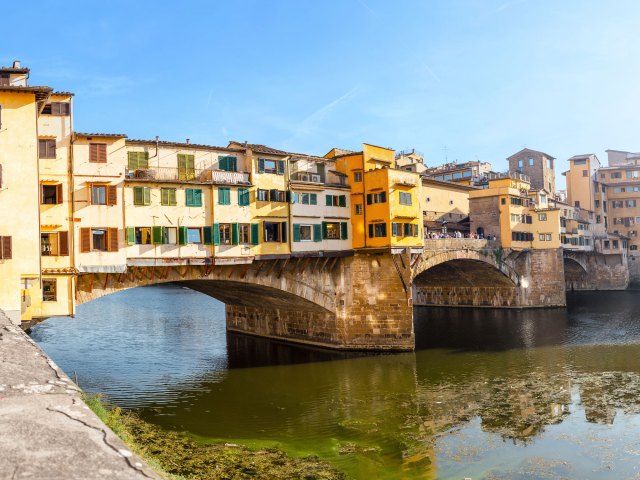
The Ponte Vecchio (Italian for “Old Bridge”) spans Florence’s Arno River as the city’s oldest bridge. A bridge has stood here since Roman times, but the structure you see today dates from 1345. In its early days, the bridge was home to the city’s butchers, which was deemed a good idea at the time because it separated them from other vendors and allowed them to dispose of their scraps of waste meat straight into the water.
However, during the 16th century — partially at the request of influential families such as the Medici — the malodorous trade was relocated. Thus began a tradition of jewelry trading on the Ponte Vecchio, which continues to this day. The jumble of shops on the outer edge of the bridge forms the retrobotteghe (back shops). The reason they are situated on the outer edge of the brige is due to building controls — extending inwards was prohibited, so shopkeepers gained extra space by developing out over the water.
Brooklyn Bridge – New York, New York

In the first 24 hours after the Brooklyn Bridge’s opening in 1883, an estimated 150,000 people walked across the East River to experience what was then the longest suspension bridge in the world. German-born civil engineer John Augustus Roebling came up with a groundbreaking design that included a 1,600- foot-span from tower to tower. But sadly, Roebling wouldn’t live to see construction begin, let alone end.
Roebling’s son took the reins after his father’s death, but building this bridge was no easy feat. Workers risked their lives to excavate watertight underground chambers called caissons with dynamite and shovels. They backfilled these with concrete and built brick piers up to the water’s surface. Today, the Brooklyn Bridge remains a popular landmark with Big Apple visitors and locals alike — on average more than 116,000 vehicles, 30,000 pedestrians, and 3,000 cyclists cross it every day.
Sydney Harbour Bridge – Sydney, Australia
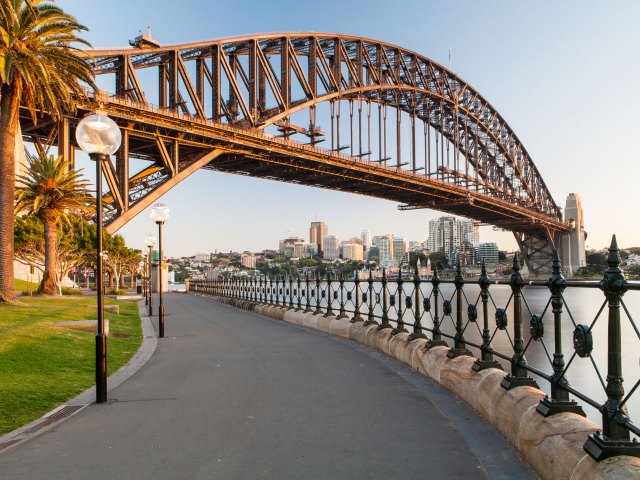
The Sydney Harbour Bridge took eight years to construct, opening in 1932 as the world’s tallest steel arch bridge. Building this Australian icon was a huge undertaking: The project was overseen by Australian engineer John Bradfield, who also had a hand in its design. Nicknamed “the coat hanger” because of its distinctive shape, the Harbour Bridge was partly inspired by New York’s Hell Gate Bridge. It also bears a close resemblance to the Tyne Bridge in northern England. This is no coincidence — the same firm built both structures leading many locals to believe the smaller British bridge was a trial run for its larger cousin.
Much of the steel used in the construction of the Sydney Harbour Bridge was shipped in pre-formed sections from England, and more than 6 million rivets hold it together. Together with the Opera House, it’s one of the city’s most recognizable sights. If you don’t have a fear for heights, one of the most thrilling ways to experience the Sydney Harbour Bridge is to harness up and climb it.
Pont Faidherbe – Saint-Louis, Senegal
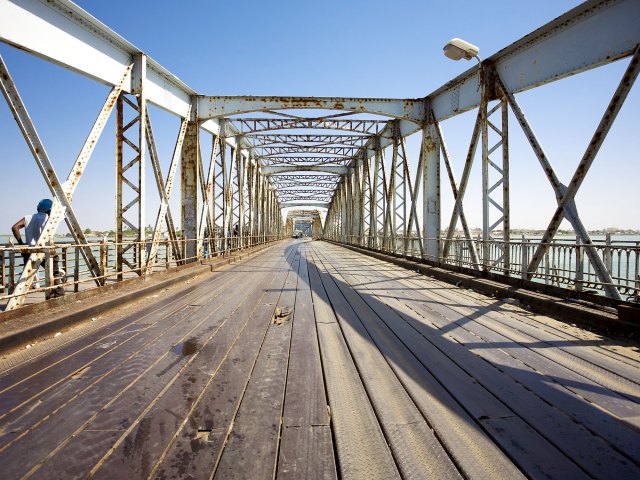
When Saint-Louis was under French colonial rule, Governor Louis Faidherbe saw the need for a bridge linking this coastal northwestern Senegalese island city to the mainland. At one point, a floating pontoon bridge was installed, but a more effective solution was needed, and the Pont Faidherbe was finished in 1897. Some sources say that Gustave Eiffel was responsible for the bridge’s design; although Eiffel’s company pitched for the job, the bridge was designed by Nouguier, Kessler et Cie. It was helmed by French civil engineer Émile Nouguier, who worked with Eiffel until 1893.
Regardless of who oversaw its construction, Pont Faidherbe is an impressive project. The bridge itself measures 1,663 feet across, with a section that is able to pivot to facilitate the passage of ships too large to pass underneath. Today, both the city and its bridge comprise one of Senegal’s seven UNESCO World Heritage Sites.
Kapellbrücke – Lucerne, Switzerland
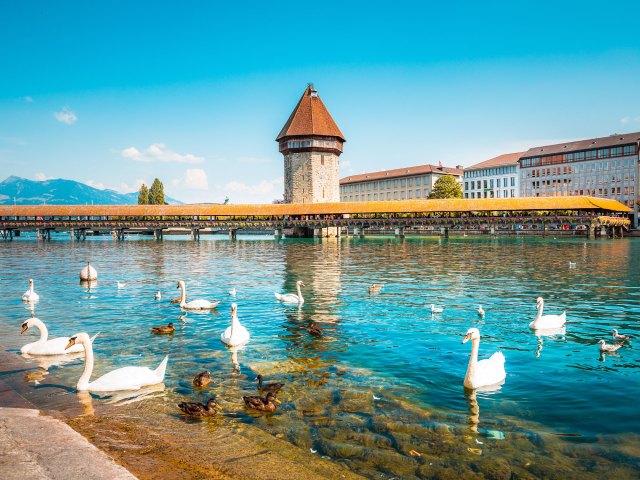
Lucerne’s famed Kapellbrücke (Chapel Bridge) gets its name from St. Peter’s Chapel, which stands along the Reuss River at the northern end of this historic landmark. Kapellbrücke is the oldest wooden covered bridge in Europe and also the world’s oldest truss bridge. Its history dates back to around 1367, when it was constructed as part of the town’s defenses.
One of the most distinctive features of the Kapellbrücke is the octagonal wasserturm (water tower), which is actually slightly older than the bridge itself. The Kapellbrücke is also well-known for its 17th-century paintings that depict scenes from the city’s past. In 1993, a devastating fire broke out on the bridge, which caused extensive damage to the structure and many of those paintings. Fortunately, the bridge (and around 30 of those 147 works of art) were restored the following year.
Meganebashi Bridge – Nagasaki, Japan
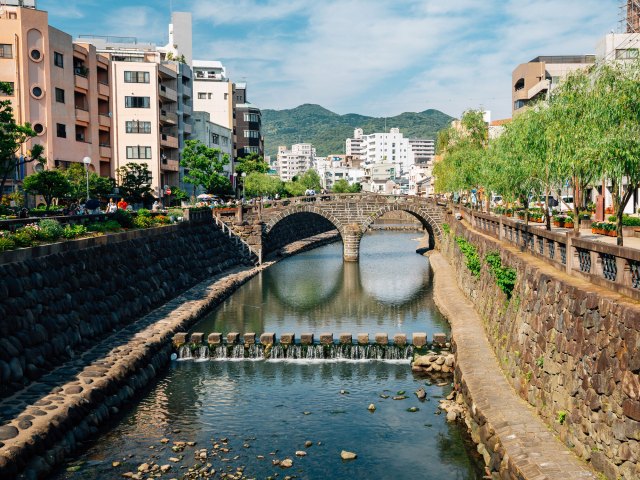
The Meganebashi Bridge, one of the oldest stone bridges in Japan, crosses the Nakashima River in Nagasaki, a port city on the island of Kyushu in southeast Japan. The original structure was built in 1634 by a Chinese monk named Mokusunyoujo; however, disaster struck just 13 years later when the bridge was washed away. Its replacement opened in 1648, but the bridge was badly damaged again by floods in 1982. This time, almost all the original stones were able to be salvaged and reused, so most of the stonework you see today is authentic.
Visitors often comment on the bridge’s unusual shape — when the two arches reflect in the water, the bridge resembles a pair of glasses, giving it the popular name Spectacles Bridge. It’s also become a tradition to come here to make a wish for eternal love. Twenty heart shaped stones can be found in the embankment walls close to the bridge; the more of them you can see, the more likely it is that your wish will come true.
Puente Transbordador – Buenos Aires, Argentina
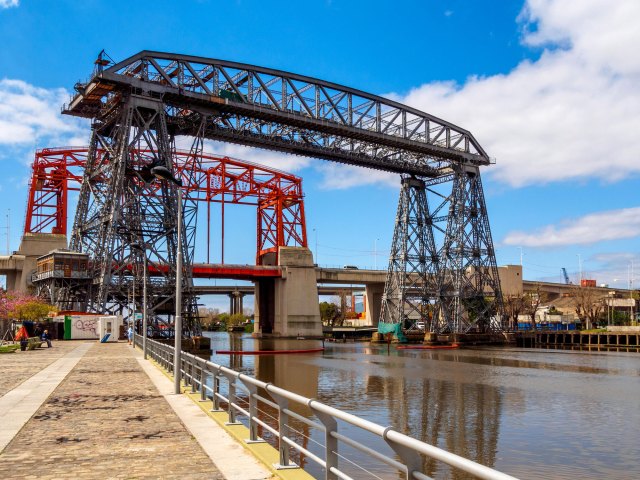
The full name for this bridge is the Puente Transbordador Nicolás Avellaneda, though Porteños (the nickname given to residents of Buenos Aires) usually shorten it to Puente Transbordador. Opened in 1914, the transporter bridge (a now-rare type of movable bridge that carries a segment of roadway across a river) crosses the Riachuelo River (also known as the Matanza River) and links the working class La Boca district of Buenos Aires with the port city of Avellaneda across the water.
A gondola was hung from the span to carry passengers and freight suspended over the water. The bridge stands right alongside a newer bridge, the similarly named Puente Nicolás Avellaneda, which was built in 1940 as a vertical lift bridge. After this, the original Puente Transbordador bridge became obsolete and was taken out of use. However, it was never demolished. In 1999, it was awarded National Historical Monument status, and in 2017, following significant restoration work, it was reopened to pedestrians.
Tower Bridge – London, England
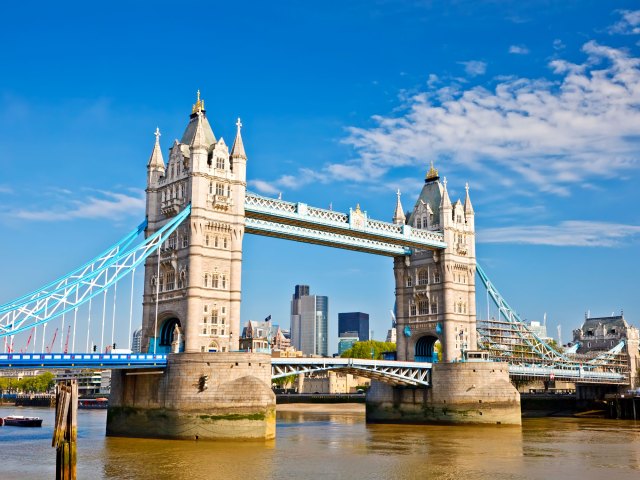
London’s Tower Bridge is a late 19th-century double-leaf bascule (a bridge with a pivoting section that is raised and lowered) which crosses the Thames River at the much older Tower of London. The steel structure, clad in Cornish granite and Portland stone, was originally powered by steam and later replaced by electrified hydraulics. Vessels with a mast or superstructure greater than 30 feet tall, which wish to enter or leave the Upper Pool of London, need to pre-arrange a bridge lift. The Tower Bridge lifts its span an average of 800 times each year, and times are published online. Traffic is held while this occurs, but pedestrians can access the bridge’s glass-floored walkway above.
More from our network
Daily Passport is part of Optimism, which publishes content that uplifts, informs, and inspires.























